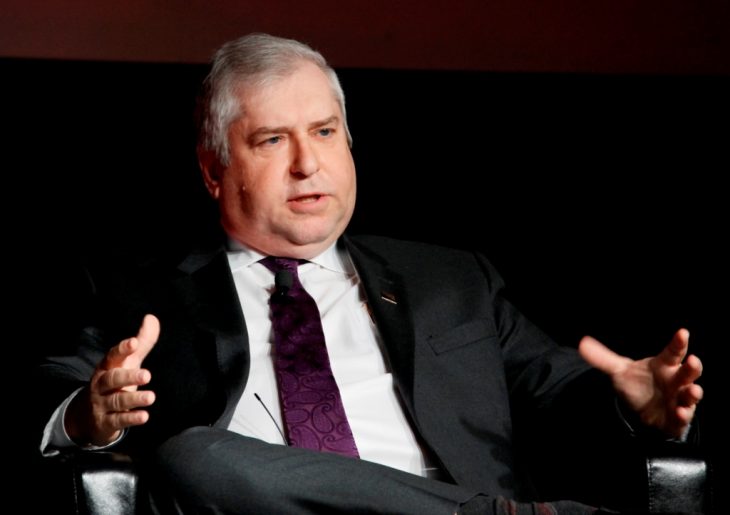
TORONTO – Marking his first appearance at the Canadian Telecom Summit as acting chairman of the CRTC, Len Katz shared some statistical highlights from the Commission’s upcoming Communications Monitoring Report during a fireside chat with CTS 2012 co-organizer Michael Sone on Tuesday morning.
“Effectively, Canada has the most connected infrastructure probably in the world, and we have the most advanced systems,” Katz said, basing his comments on data that will be released in about a month in the CRTC’s annual Monitoring Report. According to CRTC data, 99% of Canadians now have access to high-speed Internet, he said.
As part of its public hearing in 2010 to deal with basic service objectives, the CRTC delineated a target of 5 Mbps (megabits per second) download speeds for all Canadians across the country by 2015. “The data that I saw last week indicated that we already are at 88% of all Canadians having access to 5 Mbps download speeds and 1 Mbps upload,” he explained. “And in fact, 76% of all Canadians have access to 50 Mbps.”
With regard to LTE wireless networks, 45% of all Canadians have access to 4G LTE, “which is a phenomenal statistic, given the size of this country, the diversity of this country and the length of time this technology has been around,” he said.
When it comes to having access to a computer in the home, Canadian households are actually ahead of U.S. households in that area, according to the acting chair. Recent data shows 83% of all Canadians have access to a computer in their home, while in the United States that number is 68%, Katz said.
When asked about a recent shift in focus in the United States toward ensuring broadband access for low-income households, and not just rural households, he pointed out that it may be more difficult to implement such an initiative in Canada. While the Canadian industry might be supportive of a private-public partnership, there is no association currently in Canada that could coordinate this type of industry initiative, the way it is being led by the National Cable Telecommunications Association in the U.S. “Unfortunately in Canada, the Canadian Cable Television Association was disbanded several years ago. I guess the industry did not see fit to retain it,” Katz said. “So there is no glue or no effective opportunity for one association to focus on this initiative.”
Katz added that he thinks it is incumbent upon Canadian carriers, and not the regulator, to take on this initiative. “(The CRTC) quite frankly does not have any money ourselves,” he said. “We can take money from one stakeholder and give it to another stakeholder, but there’s got to be a good and valid reason to take money out of a publicly traded company or private entrepreneur and move it across to somebody else.”

Speaking to the related issues of wholesale regulation and telecom competition in Canada, he also shared some statistics regarding the price of Canadian wireless services, which, according to Katz, are less expensive than similar wireless services in the United States. “What we found is the average wireless customer who consumes about 450 minutes a month pays as much as 30% less in Canada than they do in the U.S.,” the acting chair explained. “When we look at broadband services, the average Canadian consuming the same kind of capacity and download speeds as the U.S., pays 31% less than the U.S.”
Looking at bundled services, the average Canadian residing in a major urban market pays about $175 per month for wireline, wireless, broadband and digital telephone services, where the same bundled services cost U.S. customers in major urban markets about $241 per month, he said. “So we do have competition. Do we need more competition? We can always use more competition,” he said. “But the reality is we believe at the CRTC that the market right now is quite strong, quite vibrant and is doing what it should be doing to protect the interest of consumers.”
He added that wholesale regulation is here to stay “as long as the marketplace without regulation cannot provide the necessary tools and ingredients for Canadians to have competitive services.”



